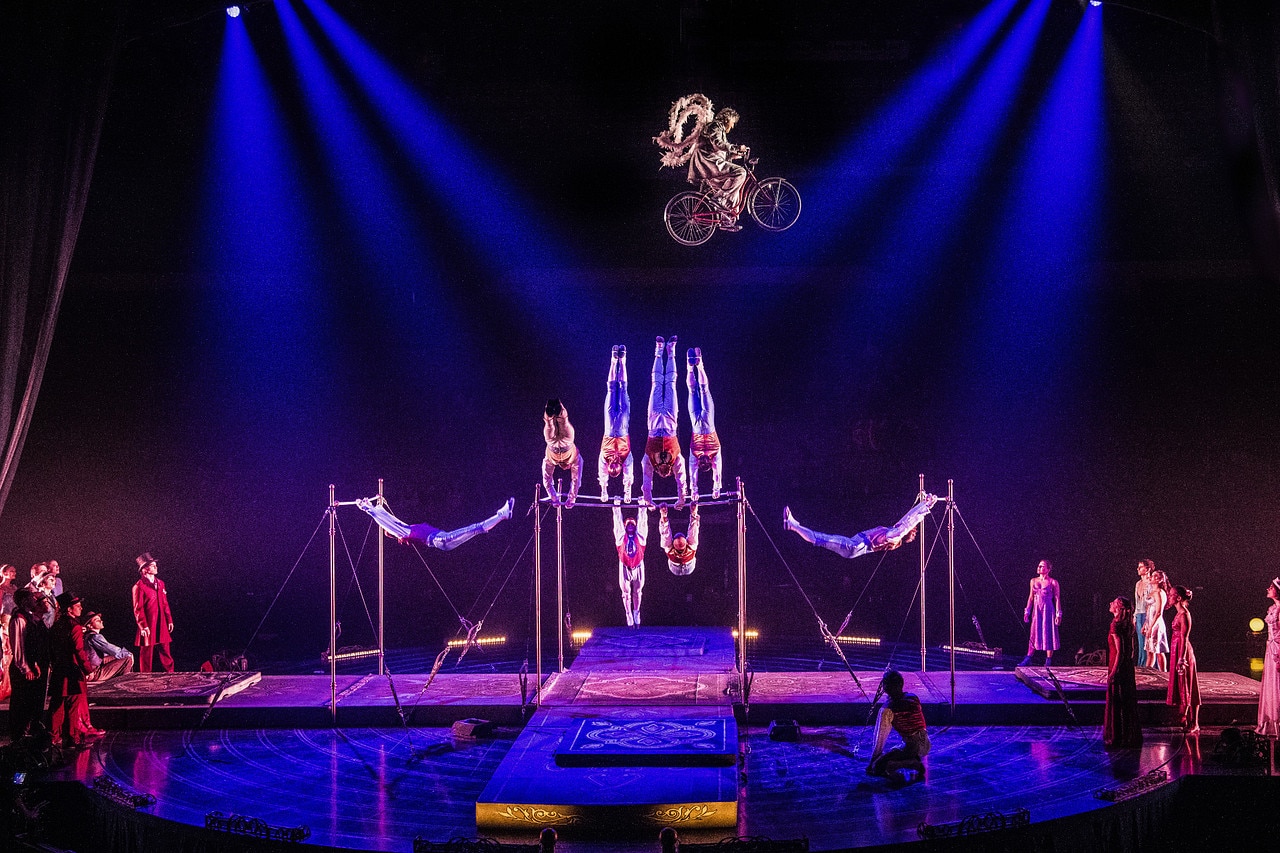The Making of Tournik
The Tournik act in Corteo is one of Cirque du Soleil’s most dazzling performances, featuring eight remarkable acrobats transforming a traditional gymnastics apparatus into a true theatrical spectacle.
But how did this triumphant rotating display of athleticism and imagination come to be?
Under the creative direction of Daniele Finzi Pasca and the expertise of aerial coach Victor Fomin, the idea of Tournik transformed a simple high bars concept into something entirely new and breathtaking.
Reinventing the Familiar
Like any Cirque show in the early stages of development, the creators of Corteo were immersed in countless technical challenges: There’s the "Patience", a massive and complex three-railed steel structure suspended 40 feet above the stage. Then there’s the Chandeliers act, where four women lull the audience into a dreamlike trance while swinging on three giant chandeliers.
But unlike these big, ambitious set pieces and scenes, Tournik was intended to create something special out of simplicity. “We said let’s take something that we have enough confidence in, but we will try to do it differently,” recalls Boris Verkhovsky, former Director of Performance Design and Development.
Using the Space You’re Given
Was Tournik designed to inhabit the elongated space of the Corteo stage, or was the elongated space inspired by Tournik? The answer is a little bit of both.

To take advantage of this linear stage layout, Daniele and Victor added a second set of high bars on each end of the performance area to fill the space and allow for more intricate tricks. But it wasn’t just about expanding the apparatus, it was about using the space to challenge the limitations of performance.
READY TO PUSH YOUR LIMITS? FIND OPEN ROLES AND CASTING EVENTS WITH CIRQUE
Turning What If’s into Innovation
The road to Tournik wasn’t without its challenges. It demanded creators, performers, and technical directors to continually ask themselves “What if?”
For instance, what if we integrated a turntable where the stage rotated during the performance? “When you rotate the whole thing on stage, you're allowing people to understand how complex it is,” says Boris. “You truly democratize the view because you get to see the performance from completely different angles without moving your seat.” But this simple rotation added unprecedented complexity to rigging and performance.
With input from the performers and Acrobatic and Rigging Designer, Danny Zen, the team invented new solutions to stabilize the apparatus while keeping performers safe.
Lighting presented another unique what if, as the creators wondered how to make a unique artistic statement that really focuses the audience’s attention during the finale. “Daniele wanted to create tunnel lighting,” Boris shares. “It was beautiful, but blinding.”
Nevertheless, striking the balance between artistry and practicality became a hallmark of Tournik’s evolution. Through incremental innovations (rotation, additional bars, expanded spacing, lighting, rigging, and tension) Tournik has redefined what’s possible on stage. As Boris explains. “We took it step by step to present it in a very different way.”
What Can Artists Like You Take Away from Tournik?
Tournik represents more than a breathtaking act. It’s a testament to the resilience, adaptability, and collaborative spirit required to succeed at Cirque du Soleil.
From artists influencing character development to creators redefining equipment, Cirque thrives on input from all corners. “Come in humble, willing to learn, and don’t be afraid to propose [ideas],” advises Boris.
Tournik reminds us that the extraordinary emerges when creativity meets determination. For those dreaming of taking the stage with Cirque, it’s an invitation to embrace challenges and reimagine what’s possible, on stage and beyond.
Ready to embrace the challenge and thrills of performing with Cirque du Soleil? Take a leap with us by creating or updating a casting profile today.
